ARCHI-CLE
地域のコミュニティをつなぎとめる場として長らく慕われてきた銭湯だが、浴室保有率が95%を超えた今、根強いファンはいるものの実際の集客は減り、廃業していく銭湯は後を絶たない。その中、この黄金湯はあえて改修という選択を取り勝負に出ることになり、我々が設計でお手伝いさせていただくことになった。
そこで、まずは現代のコミュニティをつなぐ役割を担えるように、既存のお風呂をそのままの大きさで使われなくなった焚き場やストック、機械室など限られた場を再利用し、ビアバーとサウナ+外気浴という新たな機能を足し、若いカップルや地域の仲間が仕事帰りなどに集う場として設定した。
デザイン面においては日本全国どこの銭湯でも共通の男女間の上が開いた境界壁に着目した。建築の構造的に見たら当然天井まで壁があったほうが安定で作るのも楽だと思うが、なぜそこが今も開いているのか?という疑問に向き合った。きっと、家族で別れて入っている時も声かけあって出るのに便利だったり、互いに臨場感が出ていいとか?そういうことが理由かものしれないが今ひとつ限定できない。そこで我々はその空きはじめる2250mmの高さをきっかけにデザインすることにし、まずはその上下で素材を切り替えることにした。肌に近い2250mm以下を出来るだけ肌色の素材で統一し、2250mm以上をスケルトンのコンクリートとそれに合わせた素材で構成した。さらに、所々で男女互いに「思いを馳せる」をテーマに境界を越境する作品をアーティストに作ってもらった。
銭湯特有の富士の壁画ではほしよりこさんにお手伝いいただき、男女の境界を超え一つの物語を表現した長い絵巻物のような富士山の絵を描いてもらった。そしてその絵は男女それぞれの場所から互いに完全には見えない。
田中偉一郎さんには暖簾で銭湯で昔から男女間で言い合ってきた「おーい!」を利用し、壁の向こうに「思いを馳せる」気持ちを表現してもらった。
我々はその壁を超えて一つの長い手すりを作り、男女間で見えないが一本の手すりをにぎりあい互いに「思いを馳せる」ことを表現した。
そしてその壁もなくなる、番台周りではその境界である肌色ゾーンを2250mmからカウンターの高さである1150mmに下げ、男女ともに語らう場所としてビアバーを設置した。そして、その上にガラスの提灯がある。その明かりがお客様に一日の終わりのちょっとした贅沢を灯し、地域が暖かく繋がることを願っている。
総合プロデュース,クリエイティブディレクター / 高橋理子
構造コンサルティング / ハシゴタカ建築設計事務所
竣工日 / 2020年7月29日
構造・構法 / RC造
規模 / 252.53㎡
敷地面積 / 371.30㎡
建築面積 / 259.90㎡
延床面積 / 1113.34㎡(上階共同住宅含む)
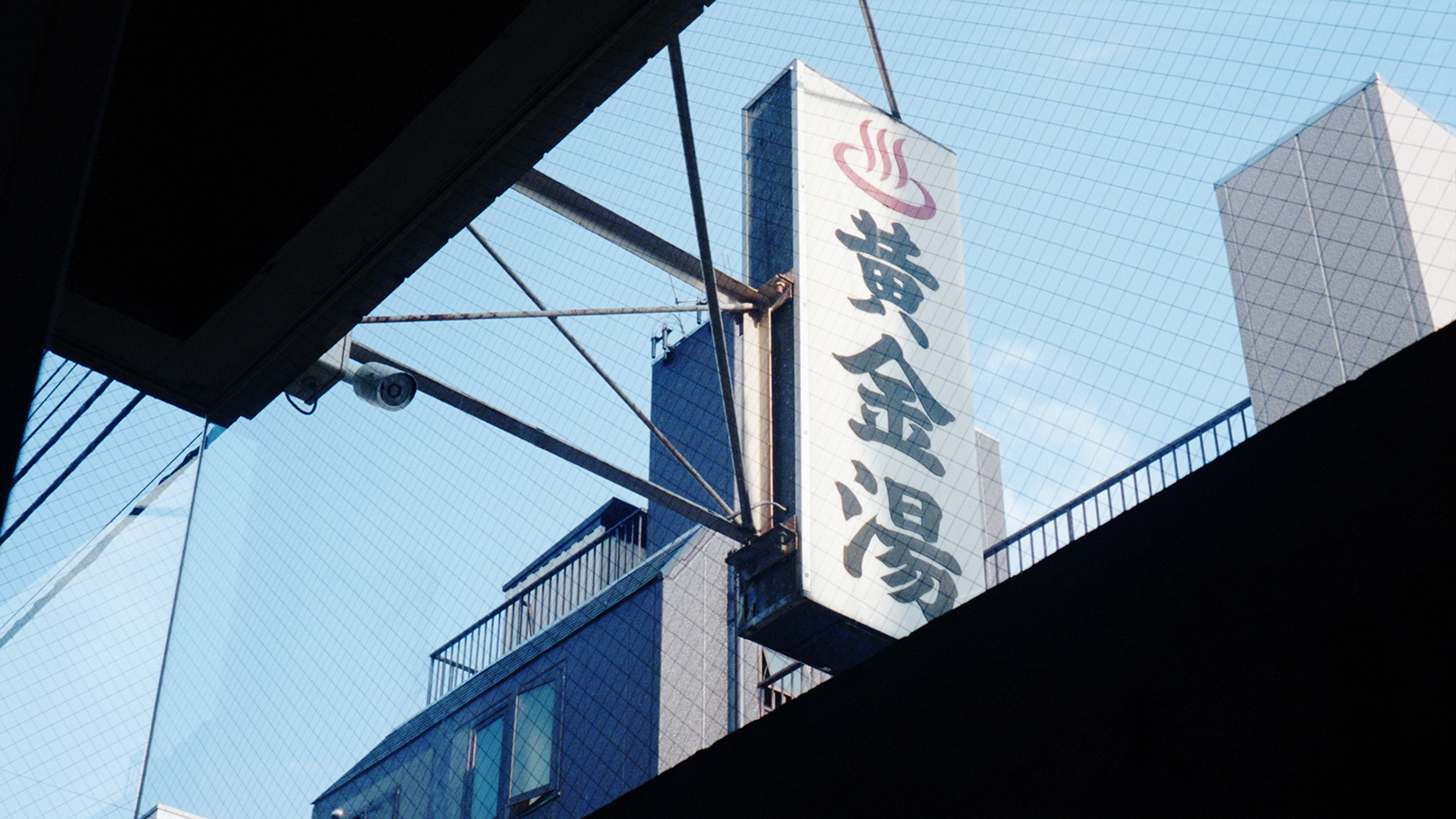
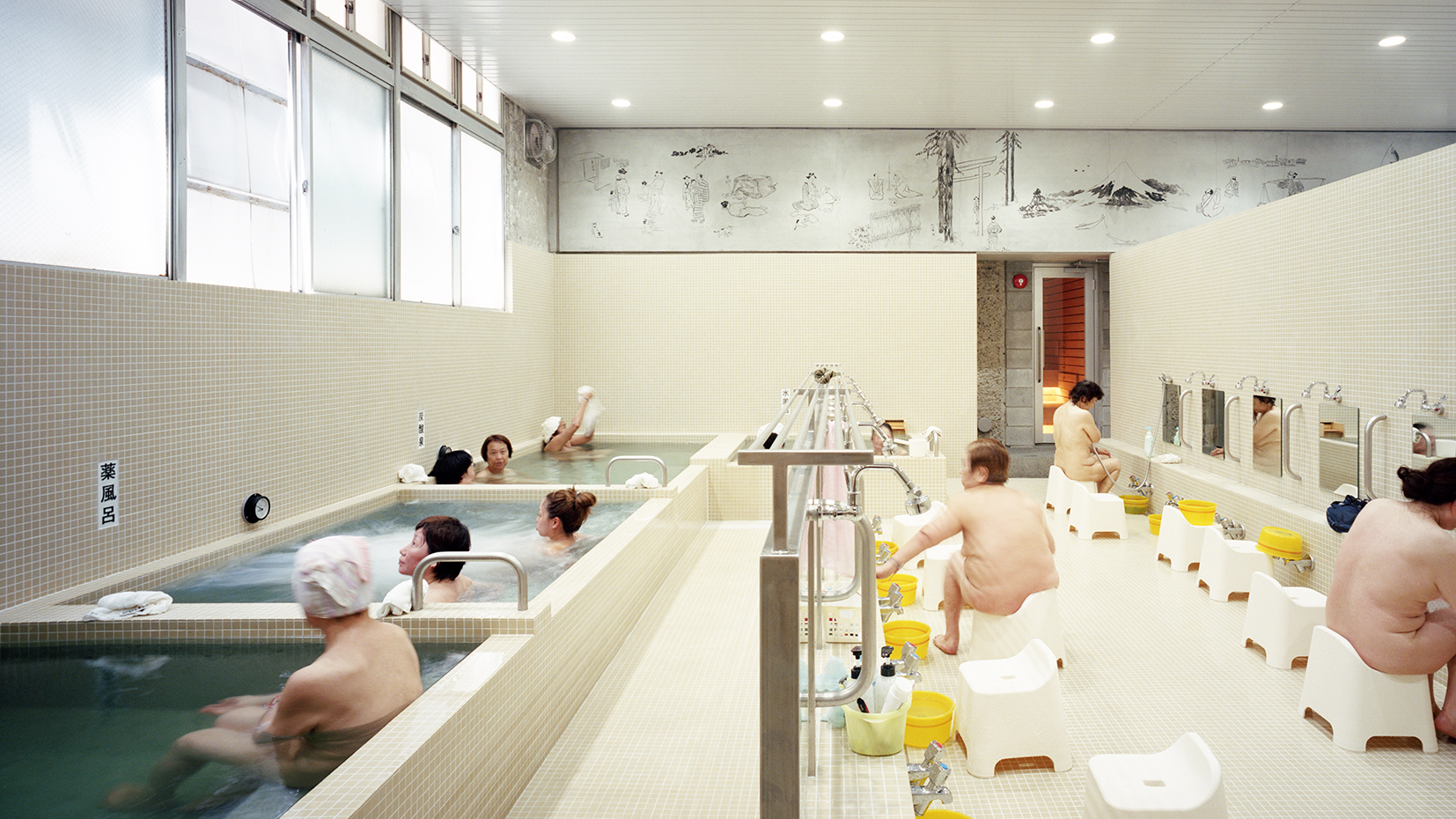

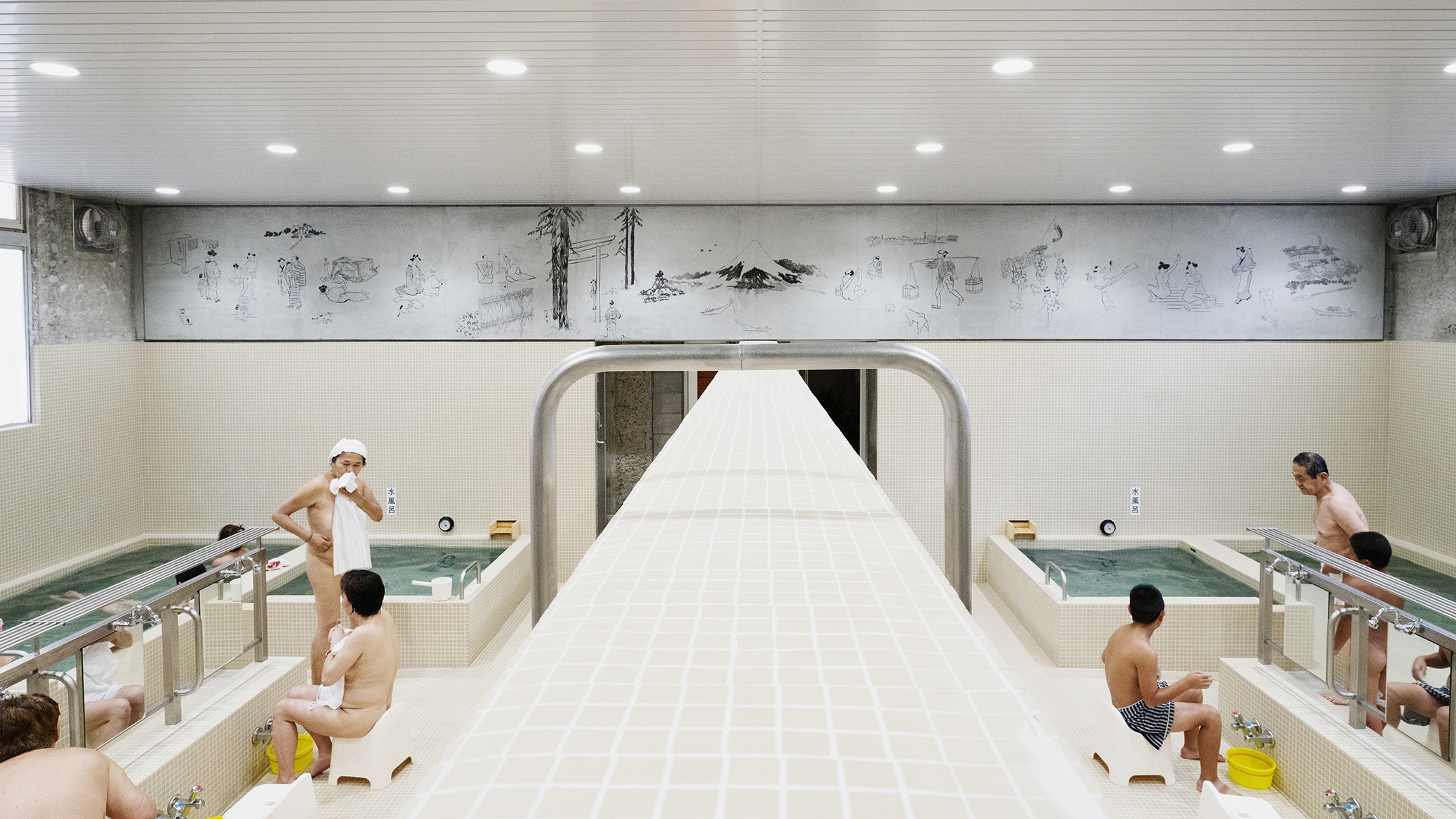

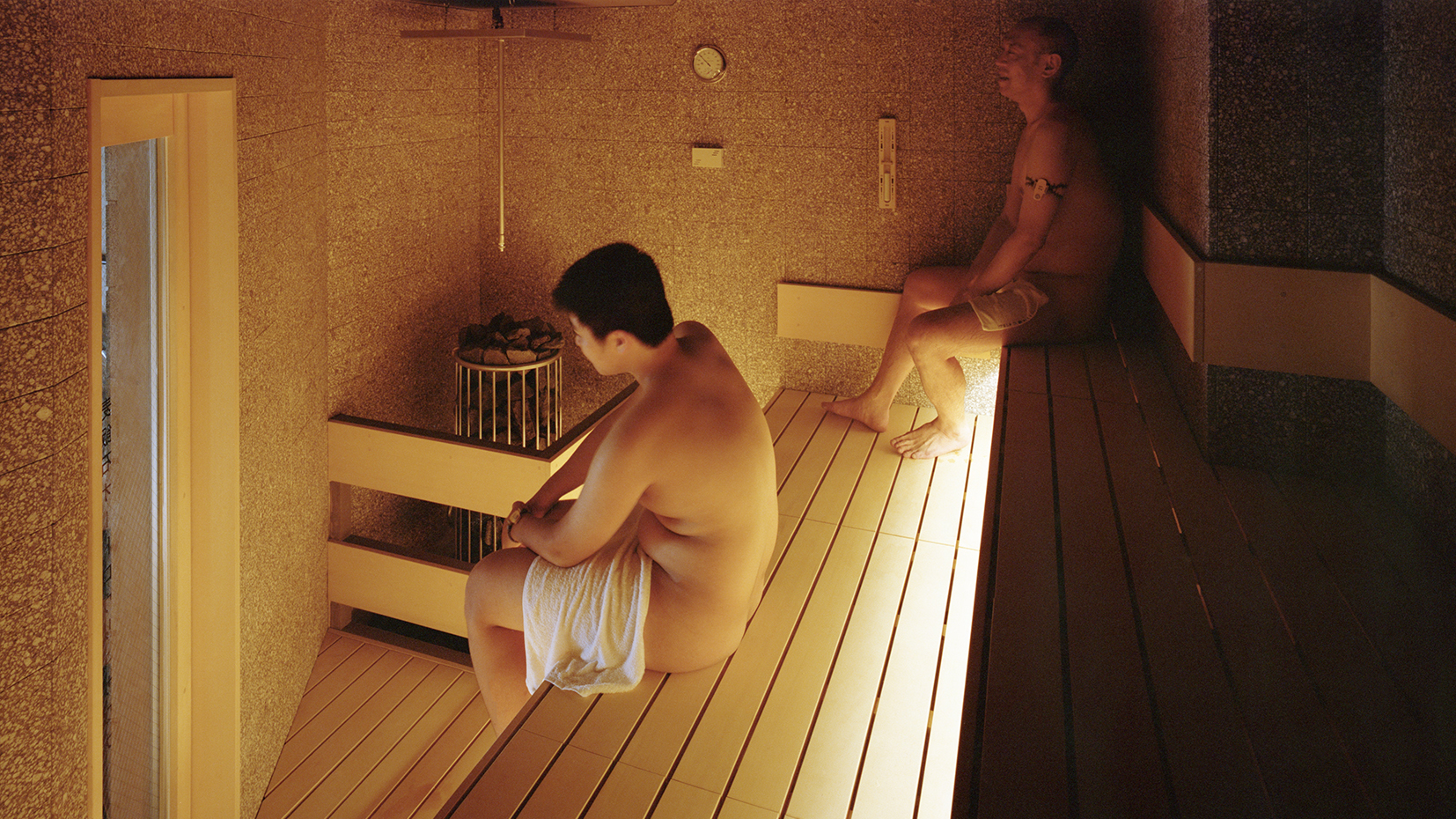
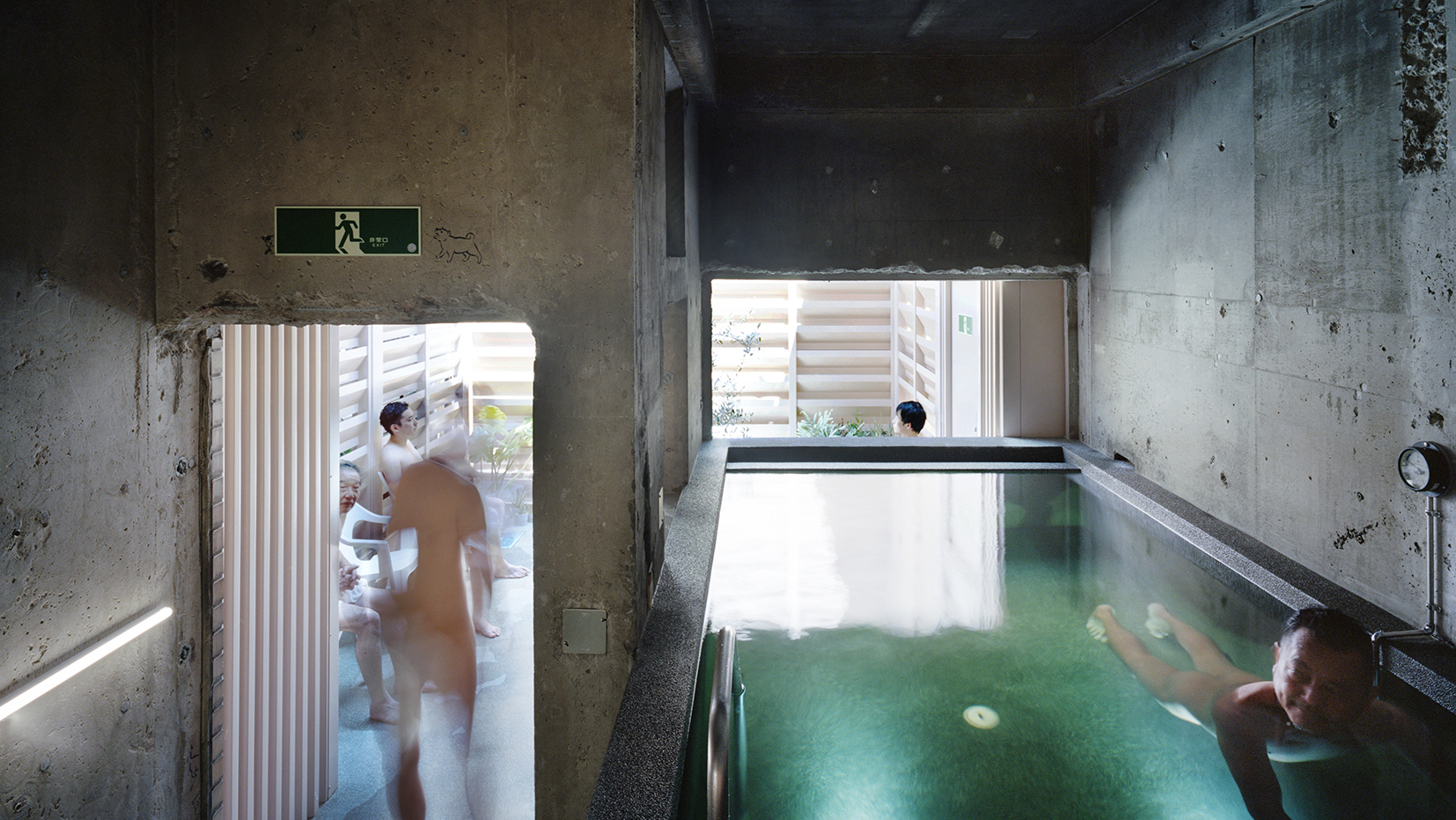


Sento, or Japanese public bathhouses, have been a long-time favorite communal gathering place where people feel a sense of connection to their communities. Now that 95% of households in Japan own private bathrooms, many sento have been forced to close due to a shrinking customer base, even though there are a certain number of long-time fans. In such a situation, Koganeyu boldly decided to renovate the existing bathhouse and ventured into a new era, and we were commissioned to undertake the renovation.
Our idea was to firstly maintain Koganeyu’s role in connecting people and their community by keeping new bath areas the same size as the existing ones, and transform the remaining areas into a gathering place for young couples and various groups in the community by reusing unused spaces including a boiler room, storage, and machine room, and adding new functions including a beer bar, sauna and air bath.
In terms of design, we paid attention to the separating wall between men’s and women’s bath areas, which does not reach the ceiling and leaves an opening between the top of the wall and the ceiling. This is actually one of the most common characteristics one would see in sento all over Japan. Needless to say, it would be structurally more stable and easier to build a separating wall that reaches the ceiling. But why do they still want to keep it open at the top? Perhaps because it is convenient for families––male family members and female family members can call out to each other to check if they are ready to get out. Or, perhaps because they want to feel each other’s presence on the other side of the wall. It’s hard to say. To begin with, we decided to use the wall height line at 2250mm above floor level as a reference axis for our design and placed different materials above and below the axis. Specifically, components below the 2250mm-line are made of materials in light beige representing the human body, and components above the 2250mm-line are made of concrete and other materials that harmonize with the exposed structural frames. Furthermore, we asked artists Yoriko Hoshi and Iichiro Tanaka to create art works that transcend boundaries between males and females under the theme “sending one’s heart to someone.”
We asked Yoriko Hoshi to paint a mural of Mount Fuji spanning the entire width of both bath areas, which is another traditional element of Japanese sento. She painted various scenes of a story transcending boundaries between males and females, set against a backdrop of Mount Fuji in the style of a picture scroll. The mural cannot be seen in its entirety from the men’s and women’s bath areas. We asked Iichiro Tanaka to design noren (split curtain) installed in men’s and women’s changing rooms. He used an expression “Oi!” (Hey!), which have been exchanged between men and women over the separating wall for a long time, to convey the feeling of sending one’s heart to someone on the other side of the wall. We made a long handrail going over the wall from one side to the other so that men and women, while they cannot see each other, can hold on to the same handrail and send their hearts to someone on the other side of the wall.
The wall disappears at the bandai (reception counter)area, where the top of the light beige-colored area is lowered from 2250mm to 1150mm above floor level to align with the countertop. A beer bar is installed there as a place for men and women to enjoy good conversations under a glass lantern. We hope that its soft glow will illuminate customers’ little luxury moments and enhance warm-hearted connections in the community.
Creative Director / HIROKO TAKAHASHI
Construction Consulting / ladderup architects
Date / 2020.07.29
Main Structure and Construction / Reinforced Concrete
Size / 252.53㎡
Building area / 371.30㎡
Building scale / 259.90㎡
Total floor area / 1113.34㎡ (Including the living space on upper floor)












